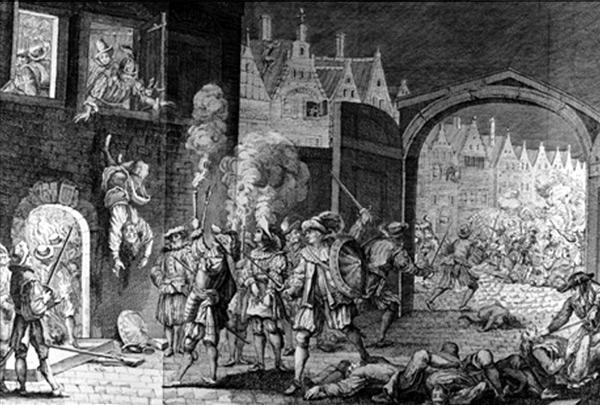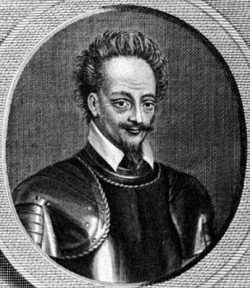The Huguenot State
The Union of the Protestants in the South set up a parallel government, copying the framework planned in Nîmes in 1562. In December 1573, the assembly met in Millau and specified the organisation of the Huguenot party.
Organisation
At the top the three powers were balanced with a general assembly that gathered the representatives of provincial assemblies every six months. The general assembly elected a permanent council with four members and one military chief. Its powers were devolved to the king, such as raising taxes, appointing ambassadors, deciding on war, promulgating laws and orders and sometimes dispensing justice.
Locally the provincial assemblies were composed of city and village representatives who met every three months, nominated a permanent council of five members, and a military governor. All the representatives had to take the oath to the Protestant Union. He idea of a federal structure was absolutely new as the assembly designated its «protector», even if the monarchical tradition led to designating a blood-prince. In July 1574, the Millau Assembly designated prince Henri de Condé “chief, general governor of the Reformed Churches.” He was replaced from 1574 to 1579 by Henri de Montmorency-Damville, a Catholic ally of the Union, then by Henri de Navare after he escaped from the court.
The Union gathered the inhabitants of the Poitou, Languedoc, Dauphiné and Massif Central regions. It is mostly urban, even popular and its aim is to keep public morals. The “rules “treated the Catholic population considerately “peacefully.” Thus a real State within the State was created, based on the system of political assemblies, very close to the organisation of the Dutch United-Provinces.
Bibliography
- Books
- COTTRET Bernard, 1598, L’édit de Nantes, Perrin, Paris, 1997
- GARRISSON Janine, Henri IV, Le Seuil, rééd. 2008, Paris, 1984
- MIQUEL Pierre, Les Guerres de religion, Fayard, Paris, 1980
Associated tours
-

The eight wars of religion in detail
The wars lasted thirty-six years. The kingdom of France had 18 million inhabitants at that time – indeed, few other European countries had as many. The growth rate rose considerably...

